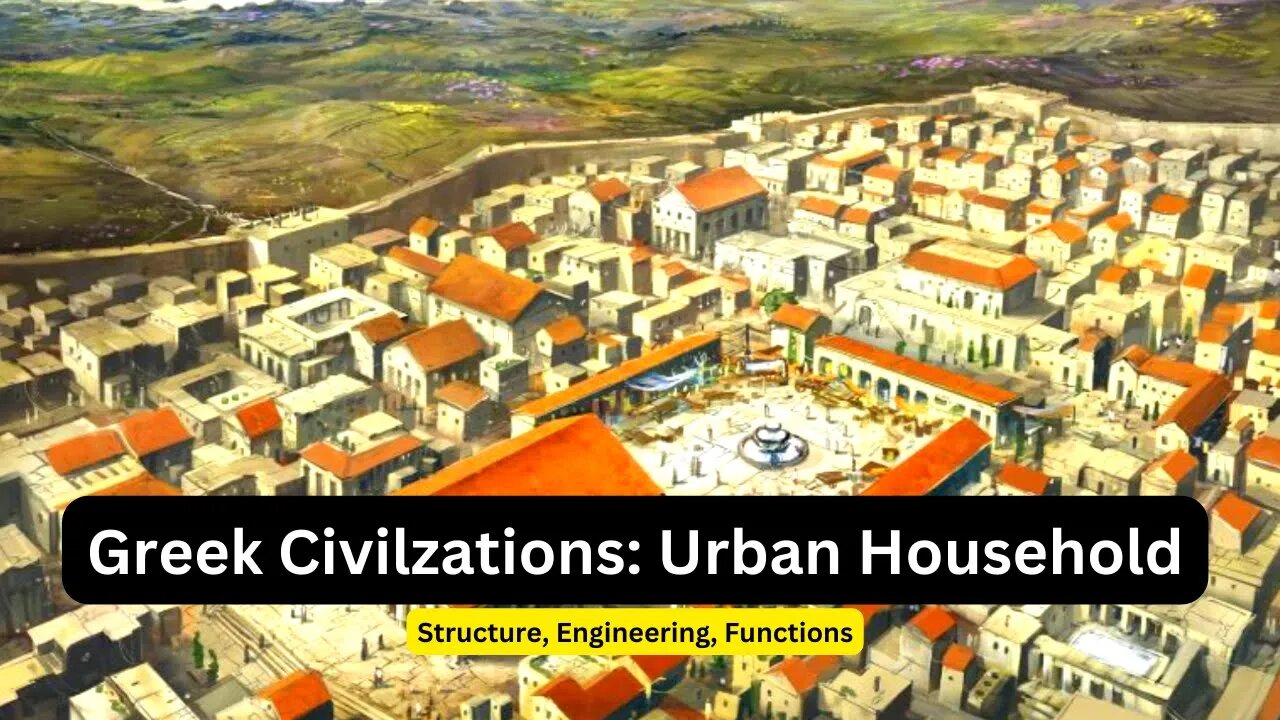Premium Only Content

14. Ancient Greece Civilization: The Urban Household - Architecture, Structure, and Use
The urban household, or oikos, was the basic unit of society in ancient Greece. It typically consisted of a patriarch, his wife, children, and slaves. The patriarch was the head of the household and had the final say in all matters concerning the household, including property, finances, and discipline.
The wife was responsible for managing the household, overseeing the slaves, and raising the children. She also had the task of managing the household's economy, which included spinning, weaving and other textile work, as well as managing the slaves.
In the upper-class households, the wife had a separate room called the gynaikonitis, where she could receive guests and conduct business. Children were raised by the mother and the slaves, they were educated in reading, writing, and arithmetic, and boys were also trained in physical activities, music, and poetry.
Slaves were an important part of the household, they performed a wide range of tasks such as cooking, cleaning, and farming. Slaves were considered property and had no legal rights. However, some slaves were treated well and even freed by their masters.
The urban household was the center of social, economic and political life. The household was responsible for the education of children, the production of goods, and the maintenance of religious rituals. The household was also the primary unit of production and consumption, where the goods were produced and consumed by the household members.
The household was a microcosm of the city-state and its social and political structures, where the patriarch represented the head of the state, the wife represented the state's economy, and the slaves represented the state's labor force.
-
 47:09
47:09
Vince Dao
1 hour agoFed Chair, Pam Bondi Consider RESIGNING as Trump Scores MAJOR Economic and Immigration Victories
7.19K4 -
 47:41
47:41
Michael Franzese
10 hours agoI Don’t Believe the Epstein Case Is Closed — Here’s Why
6.95K15 -
 36:50
36:50
The Brett Cooper Show
2 days ago $9.20 earnedWhy Conservatives Are Outraged At Trump & Superman Controversy | Episode 47
25.2K51 -
 16:43
16:43
Blackstone Griddles
1 day ago3 Classic Recipes for New Griddle Owners with CJ Frazier
4.54K1 -
 LIVE
LIVE
VladsGamingCartel
2 hours ago7 Days to Die | Vlad & Tippsy Stream #BadAtGaming
103 watching -
 35:38
35:38
Sam Sorbo
2 hours agoLIVE from TPUSA SAS: Fighting for Parents, Freedom, and the First Amendment
7.49K6 -
 16:09
16:09
Professor Nez
2 hours ago🚨BIDEN'S DOCTOR STONEWALLS: What Are They HIDING?
16.3K14 -
 LIVE
LIVE
I_Came_With_Fire_Podcast
11 hours agoThe U.S. is Reverse Engineering UAP Technology Faster Than China
323 watching -
 40:27
40:27
The Rubin Report
4 hours agoThis Democrat Is Willing to Be Honest About How They Lost Their Way | Jim Himes
134K101 -
 52:39
52:39
Her Patriot Voice
4 hours ago $2.23 earnedLIVE From SAS with Savannah Craven
20.8K1